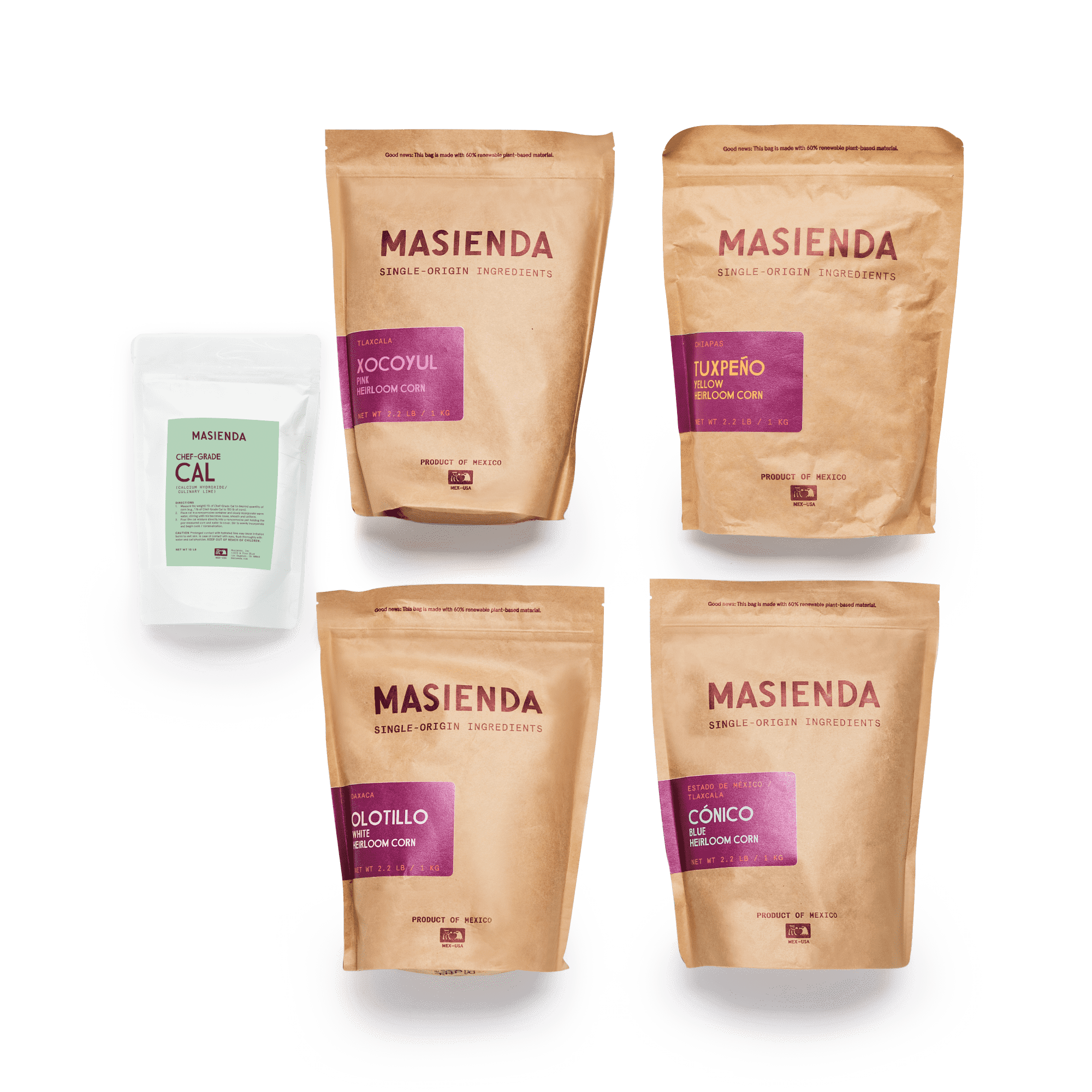
Nixtamal Starter Kit
This kit includes everything you need to fall down the masa-making rabbit hole — just bring the elbow grease. Start nixtamalizing at home with four 2.2 lb bags of heirloom corn (four different colors and varietals) and an 8 oz bag of cal. Add on a Victoria masa hand mill and a copy of MASA: Techniques, Recipes, and Reflections on a Timeless Staple by Masienda founder Jorge Gaviria, the perfect guide for your kernel-to-masa journey.
This item is currently unvavailable. Sign up to get notified when it is back in stock.
This item is currently unvavailable. Sign up to get notified when it is back in stock.

The Golden Ratio
The Golden Ratio
It’s no secret that cal (calcium hydroxide or slaked lime) is an important ingredient in your nixtamal. Our tried-and-true ratio involves measuring out 1% cal to the weight of corn. You’ve hit the Goldilocks ratio for excellent masa when, as the corn’s pH rises, its color brightens (a sign that the alkali is going to work), and the delicious aroma of fresh tortillas, tamales, and even ramen (i.e., “alkaline noodles”), begins to fill the room. Once you’ve dialed in the proper ratio of cal to corn, the ratio of corn to cooking water is a little more forgiving — think cooking pasta, where you want to make sure there’s enough water to move around and expand, as opposed to rice.
LEARN MORE

